Do you have an RV and want to know what it would cost to install hookups on your property?
The total price can range anywhere from a few hundred dollars to over $10,000, depending on the type of supplies you use and whether you choose to DIY the job or hire a professional.
Recreational vehicle owners love having the ability to keep their camper plugged in and usable at all times. However, investing in electrical, sewer, and water hookups will be necessary for full-time use, and this guide explains what you need and how much to expect the project to cost.
Installing RV hookups on personal property brings many benefits, so stick around to learn all about it!
What Features You’ll Need to DIY an RV Campsite
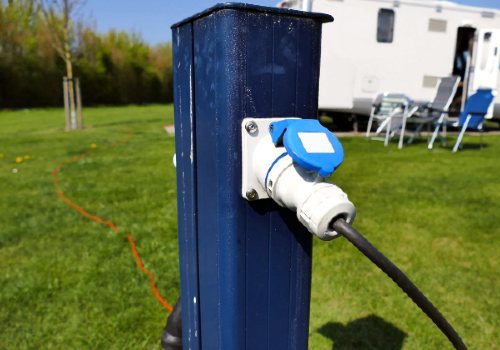
Before you begin building a site to park and plug in your RV, you’ll first want to plan out what features you want. Not every location will work for complete hookups, or local building codes may restrict what features you can add to your site.
Here are the top features to consider so that you can plan for them in your budget.
The RV Parking Pad
What type of parking pad do you want for your camper? Will you leave it grass, being the least expensive of the options, or go with a gravel or cement pad?
Cement provides the cleanest and most level surface for parking an RV but will cost the most. If you plan to use your RV in this location long-term, I suggest investing in a concrete parking pad.
Can your motorhome, travel trailer, or fifth-wheel reach the site easily and have enough room to maneuver so you can set up all the connections? You may need to lay down a gravel driveway or remove trees or structures to create the best parking pad.
Remember that all hookups for RVs should be toward the rear and right of any campsite you are facing.
Make sure you orient your campsite accordingly and also allow full extension of slides and awnings without interfering with access to hookups. No one wants to bang their heads on slideouts or need to squeeze between the RV and a fence to connect water or sewer lines.
The RV Power Pedestal
Running power lines that can handle 30 or 50-amp electrical service isn’t cheap.
The further you need to go from the main power panel, the more the copper wire will cost, as the thickness must be able to carry the amperage safely to your RV power pedestal, which will hold the breaker and plug.
Aluminum wiring is a cheaper option, but it’s not ideal for ensuring reliable power flow.
Even if you currently have a 30-amp recreational vehicle, I suggest setting up an RV electrical hookup to handle a 50-amp camper. For example, you may want to allow guests to use your campsite, or you might upgrade to a larger trailer in the future that requires a 50-amp plug.
The RV Water Lines
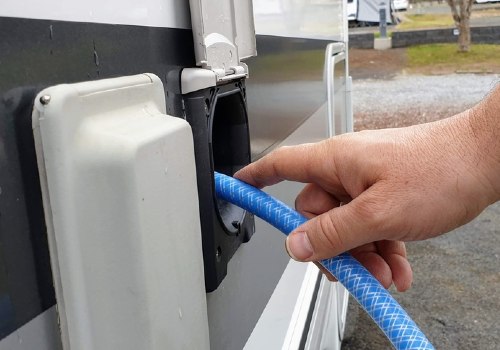
Thankfully, running water to an RV campsite is one of the least expensive projects on the list.
You’ll want to run appropriate-size CPVC piping to the fixture and install a shut-off valve at the location for winterization or emergency use. CPVC costs more than standard PVC piping but is better for potable water and can withstand higher temperatures.
Local code will determine how deep you need to bury your water line to avoid the pipes from freezing and bursting.
The RV Sewer Drain
Dealing with human waste is one concern you and local authorities need to take seriously to avoid groundwater contamination and the spread of diseases.
Running a sewer drain to tie into an existing line isn’t necessarily difficult, but it does require a specific pitch so fluid drains correctly. In addition, install a clean-out trap in the line to clear blockages from the pipe.
Most sewer lines are 4-inch PVC, and you’ll install an adapter that sits just above ground level that you will screw or connect your RV sewer hose when it’s time to drain your waste tanks.
You may need a permit and inspection from your town to install an RV sewer line on your property.
RV Parking Pad Cover
Having a cover over an RV can extend the life of its exterior and help deter leaks from causing internal damage to a camper’s framing.
Most people who live in very sunny and hot or rainy regions find putting a cover over their parking pad makes using the RV much more enjoyable.
The shade from a cover reduces internal RV temps dramatically. It also allows guests to use the outdoor patio area during rain showers without extending the awning.
While not a requirement, a cover can enhance an RV campsite.
RV Campsite Cable and Internet
Do you want your RV to have connections for cable and access to Wi-Fi? If so, you may need to bury a cable line out to the site and think about a Wi-Fi antenna or hardline to provide internet access.
RV Campsite Landscaping
Lastly, you’ll want to consider any landscaping around your new RV campsite.
Fire or BBQ pits are a nice touch, and shrubbery or plants can provide guests privacy during use, especially if the campsite is close to the main home.
Average Cost to Install RV Hookups
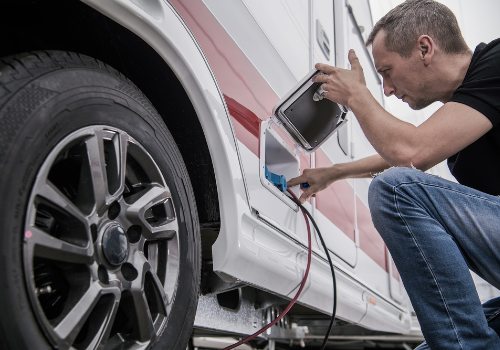
Breaking down the cost to install RV hookups for each feature will make it easier for you to form a plan and budget for your project.
For each feature, I will give you the average cost for DIY installation and hiring an expert. I’ll also provide tips on the best way to complete each task so the whole project runs smoothly.
Cost of Installing an RV Parking Pad
For a DIY gravel parking pad, expect to pay between $300-$600 for the material, depending on local prices and the size.
Expect to pay another $300-$500 for labor if you choose to hire a professional to do the work.
For a cement pad, the average cost for DIY installation will run between $400-$1000, depending on the size of the parking pad. You can make a pad just wide enough (around 8 feet) for your camper, but making a patio area large enough for your awning will make the space more usable.
It’s a lot of labor to set up the rebar mix and pour and finish off a cement pad, which is why many people choose to pay the average cost of $3000 to have one put in.
Of course, you can spend zero dollars and park your RV on grass or the ground if it’s suitable.
I suggest always using wood or parking blocks under your tires when parking your RV long-term on bare ground.
Cost for RV Water Hookup
After you have your parking pad set, the next step is to install your water hookup.
A DIY install should cost around $30-$50, which includes the piping and spigot. Digging the trench for the pipe will be the most difficult aspect of the job.
Hiring a plumber to run your water will cost between $500 and $750, depending on how far from the main water line the pipe needs to be.
You can reduce the stress of trenching by renting a trenching machine from a home improvement store. You can lower the overall cost of expert installation by DIYing the trenching portion of the job.
Before you trench, always verify with your local utilities the area you plan to dig is free of water, gas, or electrical lines.
The most cost-efficient way to DIY an RV water line is to use a garden hose from a spigot on or near your home. You can buy an RV potable water hose (Amazon link), which reduces contaminants found in a standard garden hose.
A 50-foot hose costs around $45 and makes the easiest and fastest connection to your RV for water. However, if you plan to use your camper during the winter months, you’ll want to invest the $250 for a heated RV water hose (Amazon link) or insulate the hose well to prevent freezing.
To prevent accidental damage from having your RV back over the water spigot, you should place a post that sticks up from the ground around 3-4 feet so you can see it when backing your camper into the campsite.
Run your water line to this post and install a riser and spigot, bracketing it to the post so it remains rigid.
Local plumbing codes often require a backflow preventer on the spigot to stop RV water from running back into the main water line.
Cost of Installing an RV Power Pedestal
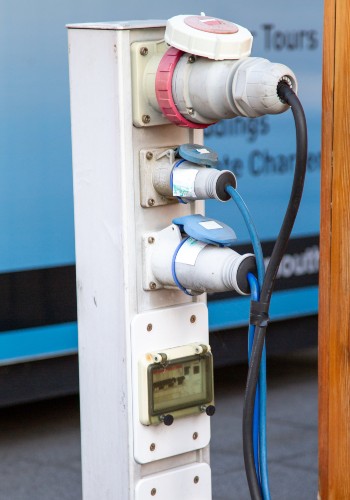
The power hookup for your RV is one of the more expensive costs, and hiring a professional electrician is the best choice if you don’t have experience working with 30 or 50-amp service.
If you’re confident in your electrical skills, you can expect to pay between $100 and $600 for a DIY installation.
Professional installation with materials can cost anywhere between $500 and $1400, depending on how far the wiring needs to run.
Buying the correct gauge wiring is critical for reliable power for your RV.
Why does wire size matter?
Wire rating tells you the safe amount of voltage the wire can carry and how much wattage it can produce.
Thicker wires can carry more current than thinner ones. Using a wire too small for the job will cause it to overheat and burn, possibly ruining your RV appliances and devices or even causing a fire.
For aluminum wiring for 50-amp service, you’ll need to use No. 4 AWG (American Standard Gauge).
For copper wiring, you’ll need to use No. 6 or No. 8 gauge wiring (Amazon link), rated for dry and wet underground installation. Experts recommend copper wiring versus aluminum for all RV campsites but expect a roll of 125-foot-long wiring to run around $500.
Always go with the thicker wire when in doubt to prevent overheating problems in the future.
Distance also plays a role in the gauge wiring you’ll require so power can flow uninterrupted and with enough strength to run all your camper’s appliances.
Want to Connect With a Community of Over 1,078 RV Enthusiasts?
The longer the wiring runs, the thicker you’ll need the electrical wiring to be.
You’ll want to install a pedestal for your RV power service.
Inside this pedestal will be the breaker for the 30- or 50-amp plug and the appropriate outlet for your RV plug.
The pedestal box will look very much like a residential electrical panel, with a door to access the main breaker and often a smaller box that will hold only the outlet for the plug (Amazon link).
Most RVers will have the pedestal or boxes attached to a wooden post, similar to the one you install for the water spigot.
If your RV is parked close to your home, you can opt for installing the correct amperage plug on your home and using a heavy-duty-rated RV power cable (Amazon link) to run power to the camper.
This type of installation is only for distances less than 100 feet, and a 50-foot cord costs about $250.
If you plan to bury your electrical wire, consider trenching for your power line at the same time you trench for your waterline. Doing the work together will reduce costs and save time.
Do be aware that you cannot bury your water and electrical lines in the same trench.
It’s wise to pay for a quality RV surge protector (Amazon link) to place between your power pedestal and your RV plug as an extra layer of security against power issues.
Installing the RV Sewer Drain
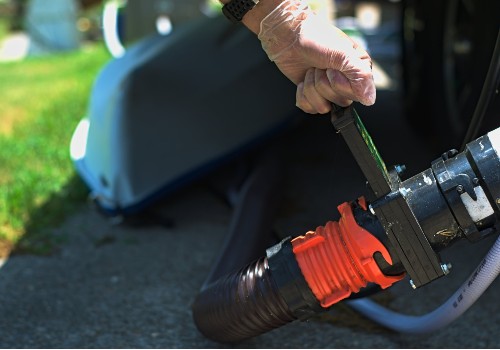
After checking with local authorities about the legality of connecting to your residential sewer lines, you’ll next bury piping so you can empty your RV waste tanks.
Some connections will be direct to the public system, or you can hook to a septic field or install a septic field to handle this feature.
The DIY cost to run a sewer drain averages around $50-250, which includes all the couplings and adapters necessary to hook your RV sewer hose so you can drain your tanks.
The cost for a plumber to install the sewer lines, especially if you need to install a septic system, will range from $1000-$6000.
The most cost-efficient sewer drain option is having an existing sewer clean-out connection in your yard within 20-30 feet of your campsite. If this is the case, you can avoid all costs of installing drain pipes and instead use your RV sewer hoses (Amazon link) to connect directly to the residential drain line.
A four-inch PVC pipe is standard for septic drain lines. If you install a new drain, make sure you don’t place the hose connection too high above the ground.
Putting the drain cap too high will make it challenging to drain your waste tanks and hoses entirely. Instead, keep the drain adapter even or no more than three inches above ground level.
Installing an RV Parking Pad Cover
If you choose to cover your RV campsite, you can DIY a permanent canopy out of a kit for around $500-$1200. Most kits sell as carports, and you’ll extend the height to accommodate the size of your camper.
Expect to pay $2000-$3500 for professional installation of an RV cover. The bonus of installing a shelter is that you can also incorporate a small shed or enclosed area as part of the structure that can hold a washer and dryer or be storage for camping equipment.
Installing RV Cable and Internet
Running cable for TV and internet to your RV is relatively inexpensive and will cost less than $50.
The actual cost will be the wiring and connectors to reach and connect to your RV unless you need to pay for your local cable company to handle the task for you.
Burying the cable line will keep your yard clutter-free, and you can use a portion of your power or water pedestal pole to install the box for quick connections.
Final Thoughts
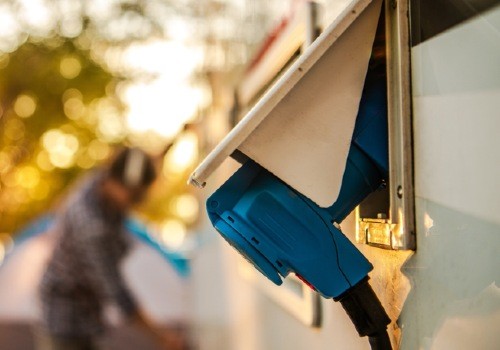
The total cost to install RV hookups can range from $950 to $3100 for a DIY job and $5050 to $14,250 for all the bells and whistles with professional installation.
As you can see, the cost varies widely depending on your level of skill, what features you include, and how far you need to run all your pipes and wiring.
The actual value of installing RV hookups on your property is that you gain full use of your camper any time you wish. You can also let friends and relatives bring their camper to your home for visits.
The more you can use your RV, the better your life will be, so consider installing RV hookups and creating a private campsite for years of enjoyment!
Hook Up an RV – Connecting Your RV to Full Hook-Ups (Video)
"Man cannot discover new oceans unless he has the courage to lose sight of the shore."
-- Andre Gide

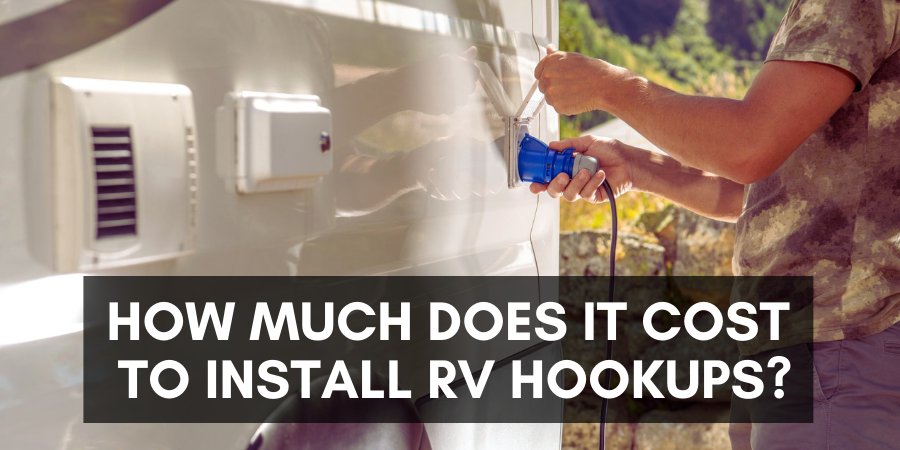
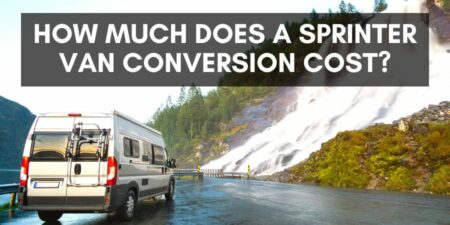


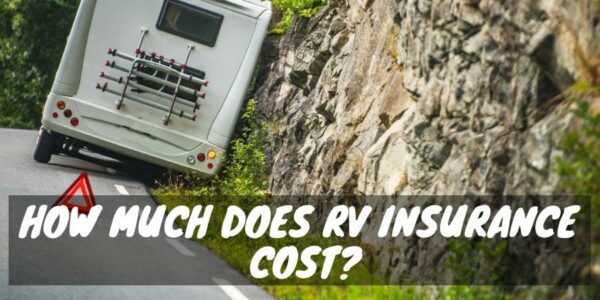






Thank you so much I’m seeking all information I can about campgrounds I’m interested in creating my own myself you did an amazing job on describing everything.